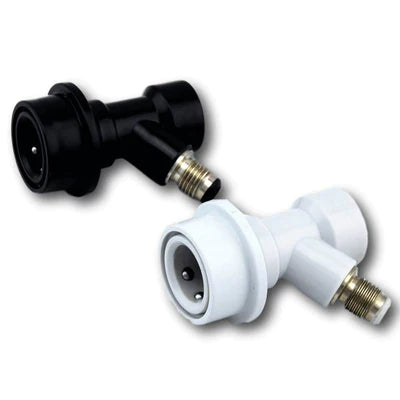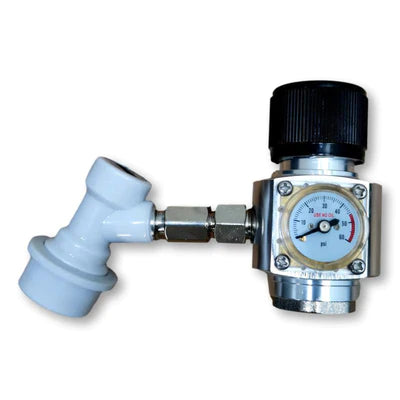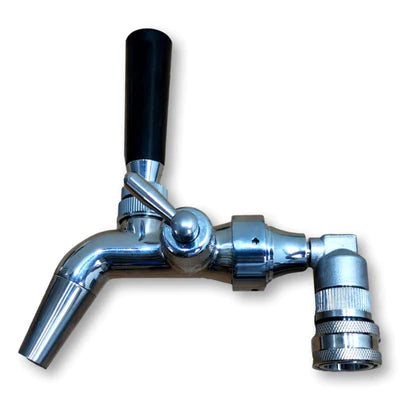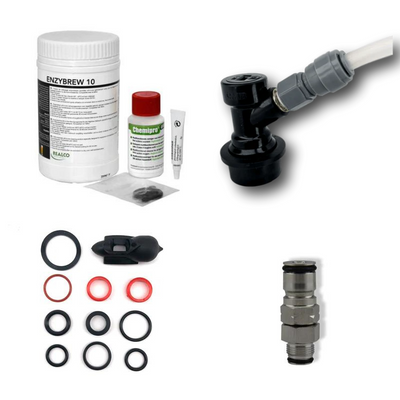FOAMY BEER TAP: HOW TO FIX IT
There are many reasons you may be getting a lot of foam coming out your tap. Without being there to see your system setup and what you are doing it's very difficult for us to give an answer as to why it might be. We've tried to cover the main ones below, along with what you can do about them.
- Under carbonated - strange but true, if you are getting a lot of foam but it is flat when you taste it your drink may be under carbonated - let it sit for a day or so at the pressures recommended on carbonation page.
- Over carbonated - if you are getting a lot of foam and the drink has carbonation when you taste it it may be over carbonated. You can adjust it by releasing some pressure, letting it sit for an hour then releasing some more pressure. Then set the regulator to the level recommended in the table on the carbonation page to get the correct level.
- A warm glass or tap - Often the 1st pour will be foamy as the cold liquid with lots of dissolved CO2 loses the CO2 when it hits a warm surface like the inside of a tap or a glass. Keep your glass in the fridge or cool it with water before pouring if it's warm. Keep your tap in the fridge if possible (like with our mini kegs), ensure any liquid lines outside a fridge are well insulated and ensure a font fan is blowing cold air inside the font to cool it if you have a bar top font.
- Pouring onto foam causes more foam - You will often see the bar tender at a bar put the glass under the tap after only a bit of beer has come through the tap and gone into the drip tray or they will pour out the bit in the glass if it is foamy before starting again. This is because if you have some foamy beer in the glass it causes the rest to foam as it pours onto it. Better to waste the first 30mls than have a whole glass of froth!
- Not enough beer line - Beer line is measured depending on it's internal diameter. We provide minimum 1.5m of 4mm internal beer line with our kegerator packages etc as this is the length needed to slow the liquid enough that it pours well when it reaches the tap, if you cut it short and don't have a flow control tap it will pour to quickly and cause foaming.
- Too much pressure - If your pressure is set too high the beer will flow too fast and cause it to be agitated and foamy when it pours. If you have a flow control tap or a kegerator with correct length lines you should set your pressure at the recommended one from the carbonation page.
- Too little pressure - If your keg has too little pressure in it it will cause the dissolved CO2 to free itself from the liquid. This causes gas bubbles in the beer lines or tap. If you can see bubbles in your beer line this is a likely cause. Your beer may also be pouring heady but flat as it is becoming under carbonated due to not enough pressure to keep it carbonated.
- Beer hasn't settled - If your keg has just been filled from a tap, then driven home, carried inside and plonked on the table it has been shaken, agitated and been through temperature changes. It will pour foamy unless you let it sit for at least 30min. We had someone wonder why their 50L keg was pouring foamy after rolling it from the pub to car, car to a speed boat, boat to party on an island and then tried to tap it 15min later.
- An interruption in the flow - This is something more equipment based you can look for if you think everything above is correct. A rough edge inside a hose where it was cut, a steel burr inside a tap etc. will interrupt the smooth flow of liquid and can make it pour foamy







